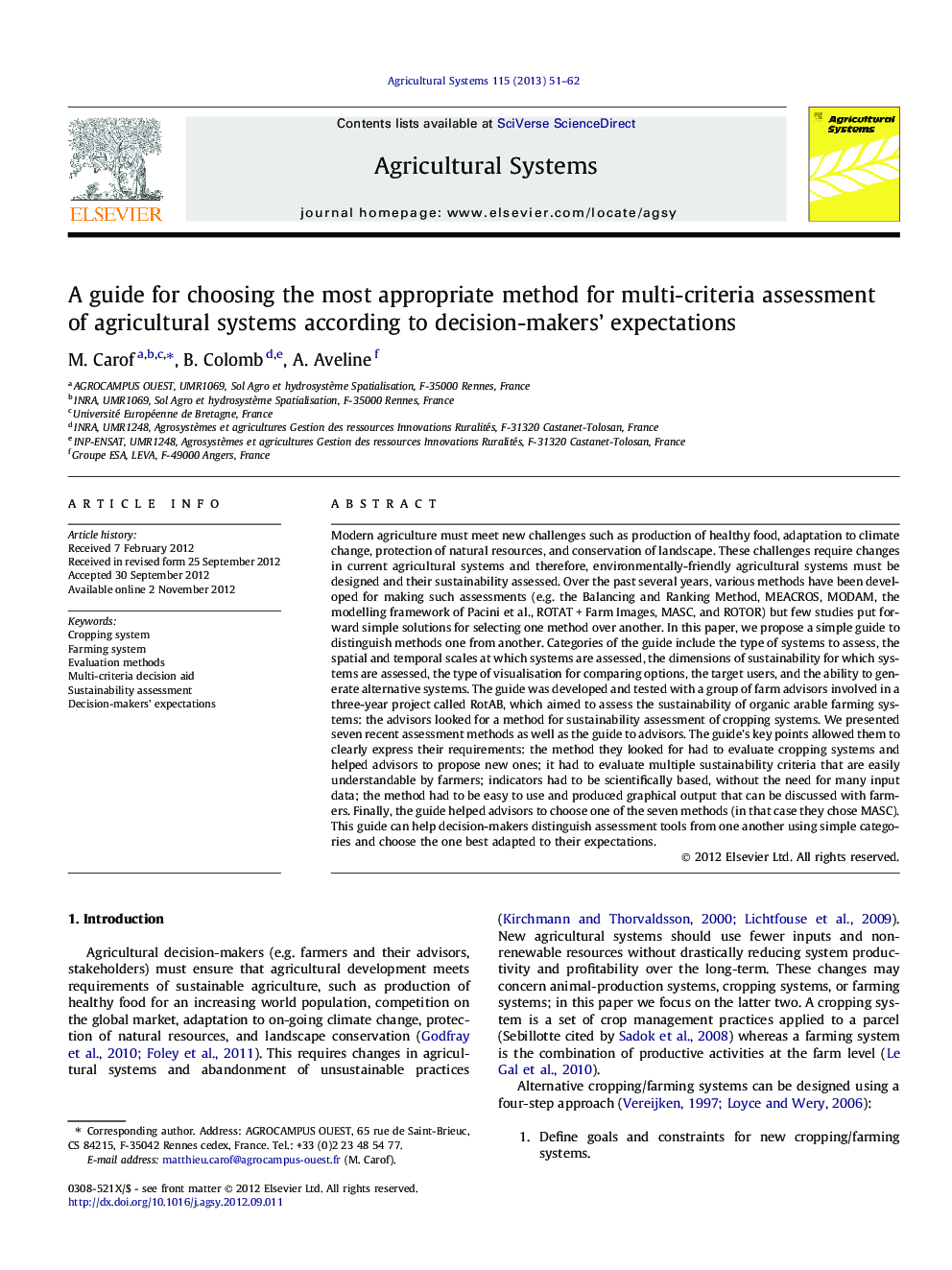| Article ID | Journal | Published Year | Pages | File Type |
|---|---|---|---|---|
| 4491373 | Agricultural Systems | 2013 | 12 Pages |
Modern agriculture must meet new challenges such as production of healthy food, adaptation to climate change, protection of natural resources, and conservation of landscape. These challenges require changes in current agricultural systems and therefore, environmentally-friendly agricultural systems must be designed and their sustainability assessed. Over the past several years, various methods have been developed for making such assessments (e.g. the Balancing and Ranking Method, MEACROS, MODAM, the modelling framework of Pacini et al., ROTAT + Farm Images, MASC, and ROTOR) but few studies put forward simple solutions for selecting one method over another. In this paper, we propose a simple guide to distinguish methods one from another. Categories of the guide include the type of systems to assess, the spatial and temporal scales at which systems are assessed, the dimensions of sustainability for which systems are assessed, the type of visualisation for comparing options, the target users, and the ability to generate alternative systems. The guide was developed and tested with a group of farm advisors involved in a three-year project called RotAB, which aimed to assess the sustainability of organic arable farming systems: the advisors looked for a method for sustainability assessment of cropping systems. We presented seven recent assessment methods as well as the guide to advisors. The guide’s key points allowed them to clearly express their requirements: the method they looked for had to evaluate cropping systems and helped advisors to propose new ones; it had to evaluate multiple sustainability criteria that are easily understandable by farmers; indicators had to be scientifically based, without the need for many input data; the method had to be easy to use and produced graphical output that can be discussed with farmers. Finally, the guide helped advisors to choose one of the seven methods (in that case they chose MASC). This guide can help decision-makers distinguish assessment tools from one another using simple categories and choose the one best adapted to their expectations.
► We propose a guide to compare assessment methods of agricultural systems. ► The guide consists of six categories (e.g. type of system, target users). ► We tested the guide with advisors involved in a participatory action project. ► The guide helped advisors to choose the method adapted to their expectations.
